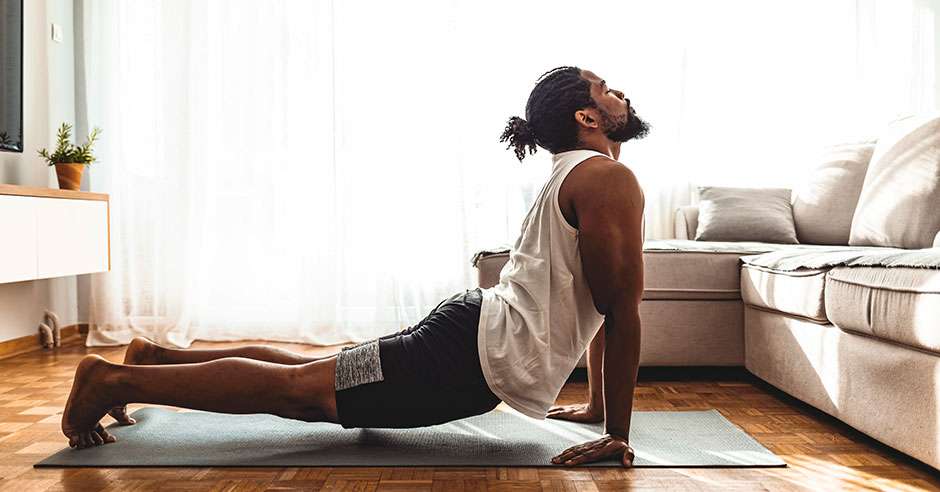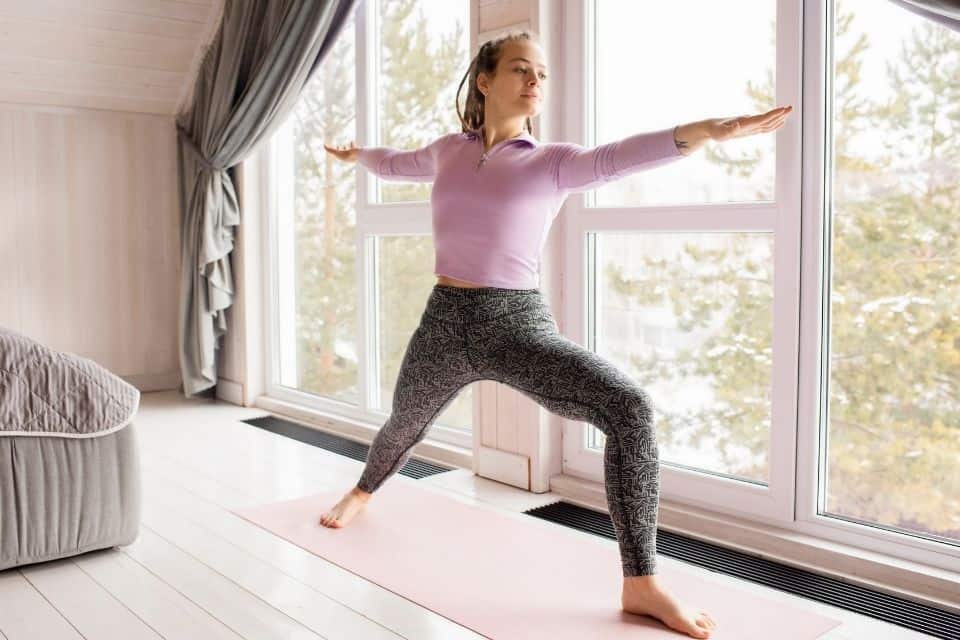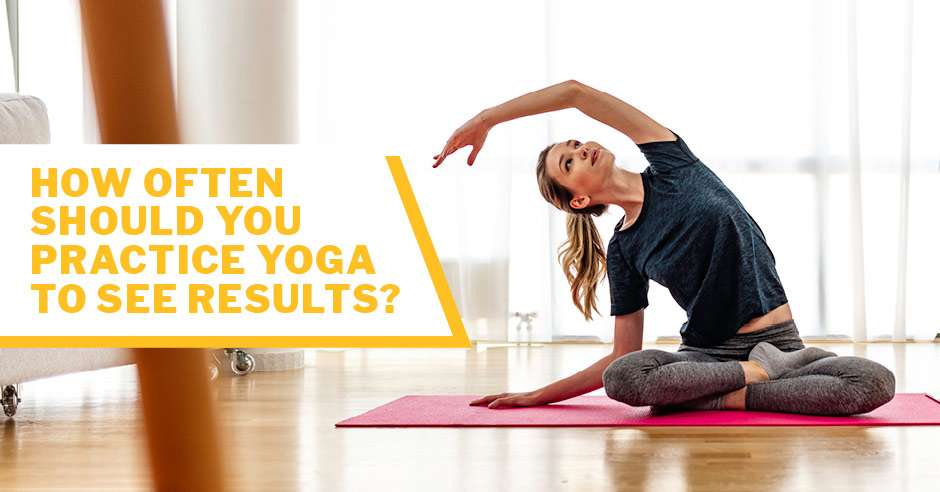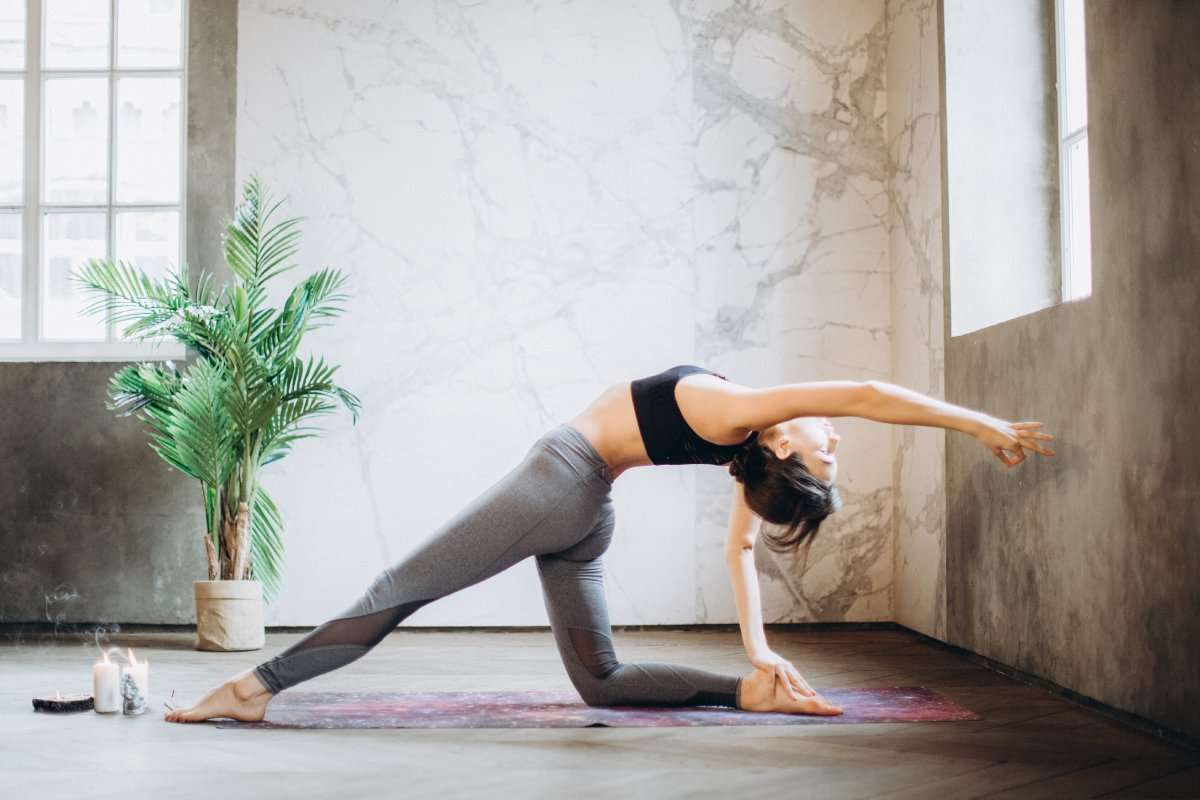So you’ve recently discovered the amazing benefits of yoga and you’re eager to incorporate it into your lifestyle. But you’re probably wondering, how often should you actually engage in yoga to get the best results? Well, luckily for you, we’ve got the answer. In this article, we’ll explore the ideal frequency for practicing yoga and how it can help you achieve your fitness and wellness goals. Whether you’re a beginner or an experienced yogi, we’ve got all the information you need to enhance your practice and reap the maximum benefits of this ancient practice.
How often should you practice yoga for the best results?
Yoga is a practice that offers numerous physical and mental benefits, but many people wonder how often they should engage in yoga to achieve the best results. The frequency of your yoga practice can vary depending on a variety of factors, including your individual goals, available time, physical ability, level of experience, and access to resources. In this article, we will explore the benefits of regular yoga practice, as well as discuss the advantages and challenges of daily practice versus a less frequent routine. We will also provide guidelines for finding the right balance and personalizing your yoga practice schedule.
Understanding the benefits of regular yoga practice
Before we delve into determining the frequency of your yoga practice, let’s first explore the benefits that come with regular engagement in this ancient practice.
Improved flexibility
One of the most well-known benefits of yoga is improved flexibility. Through regular practice, you will gradually increase your range of motion, helping you move more freely in your daily activities. As you stretch and lengthen your muscles, you will notice reduced muscle tightness and increased joint mobility.
Increased strength
Yoga is not just about stretching; it also helps to build strength. Various yoga poses require you to engage and stabilize different muscle groups, leading to improved overall strength. In addition, the core-centric movements in yoga help to develop a strong and stable core, which is essential for good posture and a healthy spine.
Better posture
In our modern sedentary lifestyles, poor posture is a common issue that can lead to a range of musculoskeletal problems. Regular yoga practice can help correct posture imbalances by strengthening the muscles that support proper alignment. As you become more aware of your body’s alignment during yoga poses, you will naturally carry this improved posture into your everyday life.
Stress relief
Yoga is renowned for its ability to reduce stress and promote relaxation. The combination of mindful movement, deep breathing, and focused meditation helps to activate the relaxation response in your body, calming the mind and reducing physical tension. Regular practice can help you manage stress more effectively and cultivate a greater sense of calm and well-being.
Enhanced mental clarity
Practicing yoga also has a positive impact on mental clarity and concentration. By directing your attention inward, focusing on your breath and movements, you create a meditative state of mind. This can improve your ability to concentrate, enhance awareness, and promote mental clarity both on and off the mat.

Factors to consider when determining the frequency of your yoga practice
Now that we have a better understanding of the benefits of regular yoga practice, let’s consider some factors that can help you determine how often you should engage in yoga.
Individual goals
The frequency of your yoga practice will largely depend on your individual goals. If you are aiming to improve flexibility or build strength, you may benefit from practicing yoga more frequently. On the other hand, if you are primarily seeking stress relief or mental clarity, a less frequent practice may be sufficient.
Available time
Another factor to consider is the amount of time you can dedicate to your yoga practice. Ideally, it is recommended to practice yoga for at least 30 minutes per session to experience its full benefits. However, if your schedule is tight, even shorter yoga sessions can still be beneficial. You can consider practicing yoga multiple times a week or incorporating shorter sessions into your daily routine.
Physical ability
Your physical ability is an important consideration when determining the frequency of your yoga practice. If you are new to yoga or recovering from an injury, it may be advisable to start with shorter, gentler sessions a few times a week. As your strength and flexibility improve, you can gradually increase the frequency and intensity of your practice.
Level of experience
The level of experience you have with yoga can also influence the frequency of your practice. Beginners may benefit from practicing yoga more often to familiarize themselves with the basic movements and build a foundation. Intermediate and advanced practitioners, on the other hand, may choose to focus on more challenging poses and deeper aspects of yoga, which may require a less frequent but more focused practice.
Access to resources
Access to yoga resources, such as yoga classes, online tutorials, or personal instructors, can also impact the frequency of your practice. If you have the opportunity to attend regular yoga classes or receive guidance from a qualified instructor, you may choose to practice less frequently on your own. Alternatively, if you prefer practicing at home or have limited access to resources, you might opt for a more frequent self-guided practice.
Daily yoga practice: Is it necessary?
Now that we have discussed the factors to consider when determining your yoga practice frequency, let’s explore the advantages and challenges of daily yoga practice.
Advantages of daily yoga practice
Engaging in yoga on a daily basis offers several potential benefits. Firstly, daily practice allows you to establish a consistent routine, making it easier to build a habit and stick to your yoga goals. Daily practice also provides a continuous opportunity for deepening your understanding of yoga poses and principles, as well as experiencing the cumulative benefits of regular engagement.
Additionally, daily yoga practice allows you to address specific areas of focus or work towards more advanced poses more quickly. By practicing consistently, you can build strength, flexibility, and body awareness at a faster pace.
Challenges of daily yoga practice
While daily yoga practice can be advantageous, it can also present challenges. Time constraints may make it difficult to commit to a daily practice, especially if you have a busy schedule. It is important to strike a balance between consistency and realistic expectations. If daily practice feels overwhelming, consider starting with a few times a week and gradually increasing the frequency as you become more comfortable.
Moreover, it is crucial to listen to your body and give yourself rest when needed. Pushing yourself too hard without allowing time for recovery can lead to burnout or potential injuries. Pay attention to any signs of fatigue, discomfort, or decreased enjoyment, and adjust your practice frequency accordingly.

Benefits of a consistent yoga routine
Whether you choose to practice daily or less frequently, establishing a consistent yoga routine can have numerous benefits for your physical and mental well-being.
Improved overall fitness
Engaging in regular yoga sessions, regardless of frequency, contributes to improved overall fitness. The combination of strength, flexibility, balance, and cardiovascular aspects of yoga can enhance your physical endurance and stamina. Furthermore, the mindful approach to movement and breath awareness helps to develop a harmonious and balanced body.
Faster progress in poses
Consistency in your yoga practice allows you to progress more quickly in poses. Practicing the same poses repeatedly helps to refine your technique, increase your body’s familiarity with the movements, and develop muscle memory. As a result, you will notice increased ease and stability in various yoga postures.
Greater mindfulness and self-awareness
Consistency in your yoga routine promotes greater mindfulness and self-awareness. By regularly engaging in the practice of bringing your attention to the present moment, you cultivate a deeper understanding of your own body, thoughts, and emotions. This heightened self-awareness can translate into other areas of your life, allowing you to make more conscious choices and respond to situations with clarity and compassion.
Increased energy levels
Regular yoga practice has a rejuvenating effect on the body and can boost your energy levels. Through the combination of physical movement, breath control, and relaxation, yoga helps to release tension and invigorate the body. As a result, you may experience increased vitality and mental alertness throughout your day.
Better sleep
Developing a consistent yoga routine can also contribute to better sleep quality. The relaxation and stress-reducing benefits of yoga can help calm the nervous system and prepare the body for restful sleep. Establishing a pre-sleep yoga practice or incorporating relaxing poses before bedtime can promote deeper and more restorative sleep.
Weekly yoga practice: Finding the right balance
Depending on your goals, level of experience, and available time, you may choose to engage in yoga on a weekly basis. Here are some guidelines for finding the right balance in your weekly yoga practice.
Ideal frequency for beginners
For beginners, it is recommended to practice yoga at least two to three times per week. This frequency allows sufficient time for rest and recovery while providing consistency to build a foundation in the practice. Beginners can benefit from attending guided classes or following online tutorials to learn proper alignment and technique.
Recommended frequency for intermediate practitioners
Intermediate practitioners can aim for three to five yoga sessions per week. This frequency allows for continued progress in poses and deepening of the practice. Intermediate practitioners may choose to incorporate a combination of guided classes and self-practice to explore their individual needs and goals.
Optimal frequency for advanced yogis
For advanced yogis, a minimum of four to six yoga sessions per week is recommended. This frequency allows advanced practitioners to explore more advanced poses, variations, and deeper aspects of yoga philosophy. Advanced practitioners may also consider attending workshops or retreats to enrich their practice.

The importance of rest days
Amidst the discussion of practice frequency, it is essential to emphasize the importance of incorporating rest days into your yoga routine.
Allowing the body to recover
Practicing yoga regularly can be physically demanding, and the body needs time to rest and recover. Rest days allow your muscles to repair and rebuild, reducing the risk of injury and ensuring continued progress. When planning your yoga schedule, make sure to include one or two rest days each week.
Preventing burnout and overtraining
Consistently pushing yourself without adequate rest can lead to burnout, both physically and mentally. Overtraining can have a negative impact on your overall well-being, diminishing the joy and benefits of your yoga practice. By incorporating rest days, you give yourself a chance to recharge and maintain a healthy balance between effort and recovery.
Avoiding injuries
Overuse injuries are a common risk when engaging in repetitive physical activities. By allowing your body time to rest, regenerate, and adapt, you minimize the risk of strain, sprain, or other types of injuries. Respect your body’s limitations and avoid pushing beyond what feels comfortable and safe.
Monthly yoga practice: Longer breaks and intensive retreats
In addition to weekly practice, some individuals may choose to incorporate longer breaks or intensive yoga retreats into their yoga journey.
Benefits of longer breaks from regular practice
Taking longer breaks from your regular yoga practice can offer numerous benefits. It allows you to recharge, rejuvenate, and gain a fresh perspective. Longer breaks also provide an opportunity for reflection, self-study, and exploration of other aspects of life outside of yoga.
Exploring intensive yoga retreats
Intensive yoga retreats are a popular option for those seeking to deepen their practice and immerse themselves in a focused and supportive environment. These retreats usually involve multiple daily yoga sessions, meditation, and opportunities to connect with like-minded individuals. While the frequency of practice during these retreats is high, it is important to balance intense practice with rest and recovery.

How to personalize your yoga practice schedule
Finding the right frequency for your yoga practice is a highly individualized process. Here are some tips for personalizing your yoga practice schedule:
Setting realistic goals
Be clear about your goals and intentions for your yoga practice. Consider what you hope to achieve physically, mentally, and emotionally. Set realistic expectations for yourself and design a practice schedule that aligns with your goals.
Creating a flexible routine
While consistency is important, it is equally important to be flexible in your practice routine. Life can be unpredictable, and circumstances may change. Allow yourself the freedom to adapt your yoga schedule when needed, while still maintaining a level of commitment to your practice.
Finding motivation and accountability
Motivation can be a powerful tool in establishing a regular yoga practice. Find what inspires and excites you about yoga, whether it is attending inspiring classes, following influential yogis on social media, or joining a supportive yoga community. If you struggle with self-discipline, consider finding a yoga buddy or working with a trusted instructor who can help you stay accountable.
Conclusion
The frequency of your yoga practice ultimately depends on your individual goals, available time, physical ability, level of experience, and access to resources. Whether you choose to practice daily, multiple times a week, or less frequently, what matters most is finding a balance that supports your well-being and aligns with your lifestyle. Remember to listen to your body, allow time for rest and recovery, and stay mindful of your physical and mental needs. Above all, enjoy the journey of your yoga practice, embracing the many benefits it can bring to your life.

